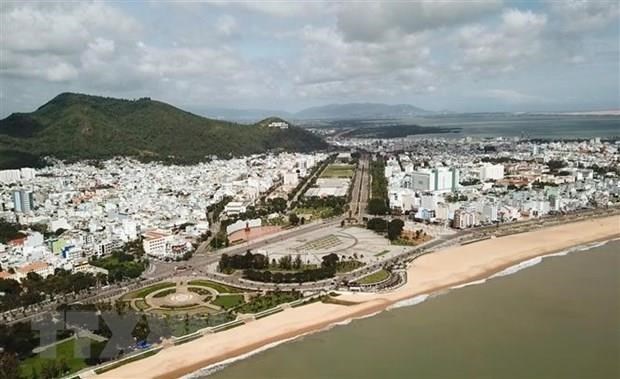 |
|
A view of Quy Nhon city, the central province of Binh Dinh |
The central region, including 14 localities from Thanh Hoa to Binh Thuan provinces,is a strategic area in terms of politics, economics, society, defense andsecurity.
The region is the home to 20.2 million people, accounting for 21 percent of thenation’s total population and makes up 28.9 percent of the nation’s area.
With the coastal lines of 1,900 km, the central region plays a crucial role inmaritime economic development.
The central key economic region was established 22 years ago based on the PM’sDecision No. 1018/1997/QD-TTg datedNovember 29, 1997, consisting of five localities, namely Thua Thien Hue province,Da Nang city, Quang Nam province, Quang Ngai province and Binh Dinh province, accordingto the VGP.
The central key economic region is located on the area of 27,882 square kilometres,accounting for 8.4 percent of the nation’s total area and has the totalpopulation of 6.5 million, making up 7 percent.
The region is regarded as a key bridging role in external economic and culturalexchanges and transporting products between central highlands provinces as wellas a most favourable gateway for localities in southern Laos, northeastThailand and northeast Cambodia through the East-West Economic Corridor.
It has advantages of four external and internal transport infrastructurestructures of road, railway, waterway and air.
In the first half of 2019, the GRDP growth of the central region was estimatedat 8.05 percent, higher than the nation’s GDP growth of 6.76 percent. Eightamong 14 localities reported the high GRDP growths such as Thanh Hoa 22.18percent, Ha Tinh 12.78 percent, Ninh Thuan 10.07 percent, Phu Yen 9.2 percent,Binh Thuan 8.46 percent, Nghe An 7.09 percent, Thua Thien Hue 6.87 percent andQuang Tri 6.8 percent. - VNA
 The Prime Minister will chair a central region economic development conference on August 20 to propose measures for sustainable development in the central region, including the central key economic region.
The Prime Minister will chair a central region economic development conference on August 20 to propose measures for sustainable development in the central region, including the central key economic region.